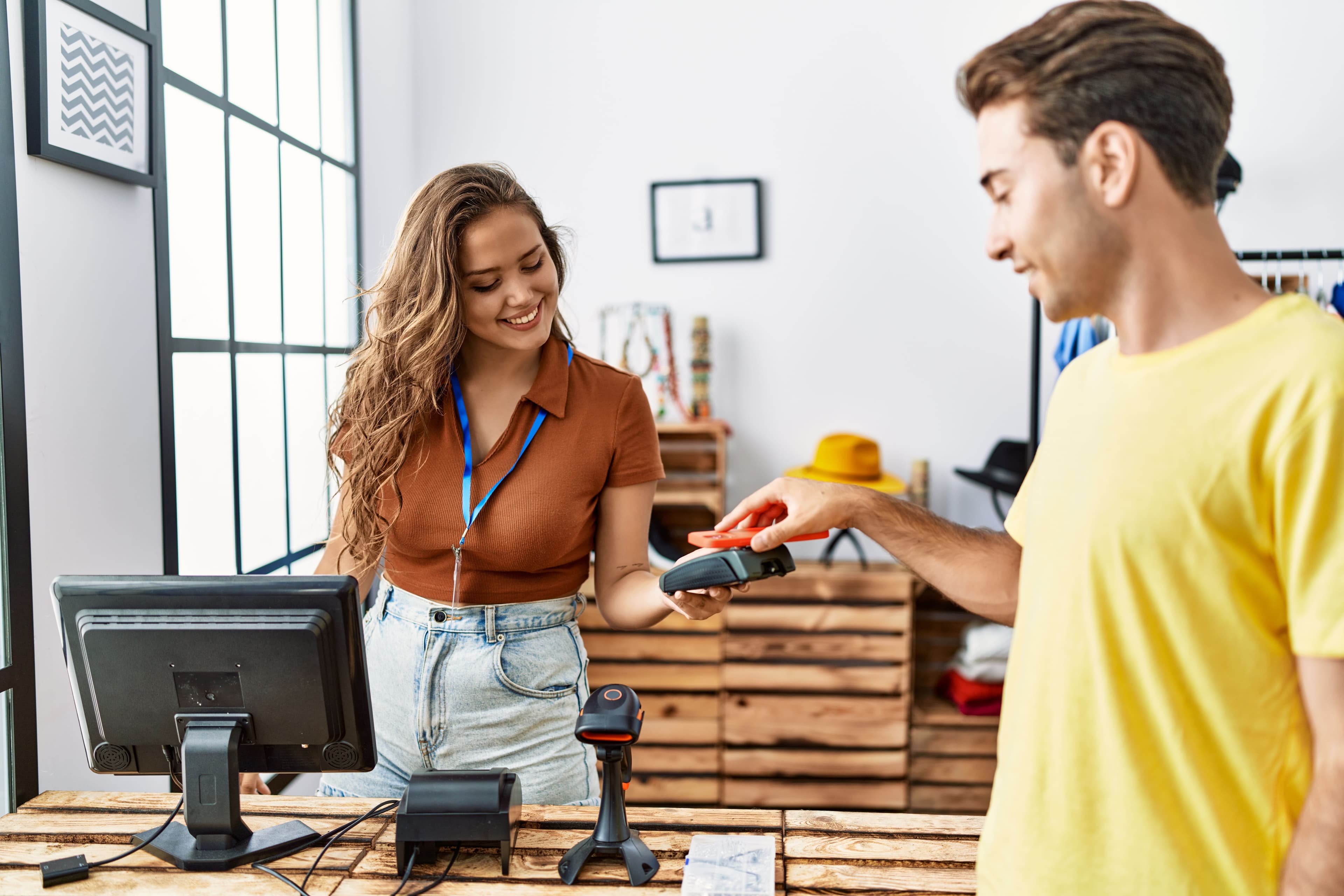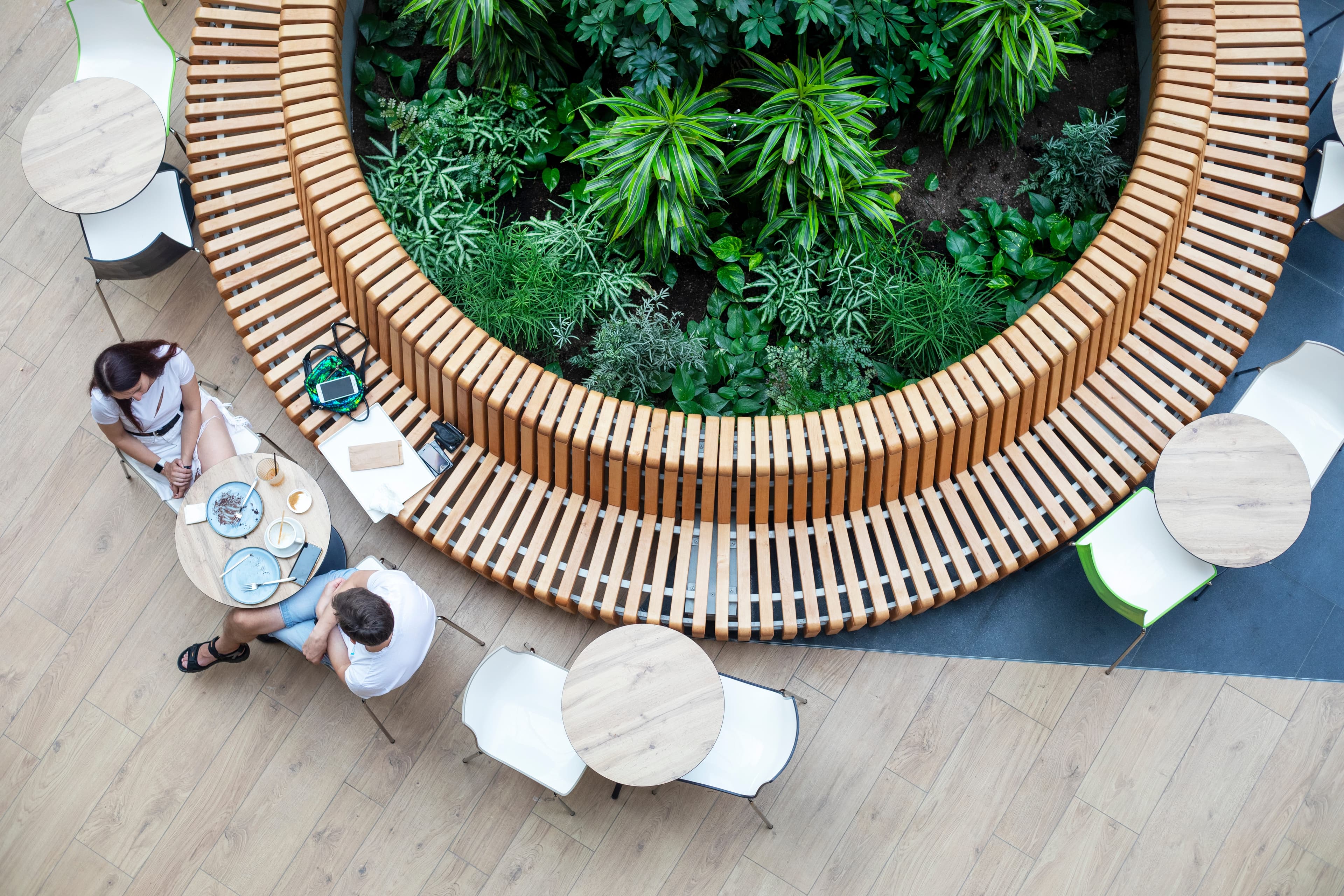Data-Backed Decisions: How Analytics Is Reshaping Retail

On this page
Joe Shasteen, RetailNext’s Global Head of Analytics, recently sat down with Ned Hayes and Cecilia Mariani from Darwoft, a boutique software development agency, to discuss where retail innovation is headed. Darwoft’s ‘DARE’ podcast hosts technological innovators to chat about shaping the future, leadership, creativity, and daring to dream big. In this episode, Joe explains how his team helps retail customers optimize their data for better decision-making, focusing on store traffic, the power of in-store data, and the importance of accurate reporting. He emphasizes the continued importance of physical retail stores, citing their effectiveness in acquiring customers and providing a direct brand-customer interaction.
Joe also mentions RetailNext's expansion into various physical spaces beyond traditional retail, allowing customers to access and analyze data more easily. The conversation touches on the ideal shopping experience, merging online and offline aspects, and the evolving role of analytics in shaping retail strategies. Throughout his eight-year tenure at RetailNext, Joe has witnessed the shift from on-premises data to cloud-based processing, enabling customers to conduct their analyses and experiments independently.
WATCH NOW: Retail Experts on the Power of In-store Analytics
The Power Of Analytics In Shaping Retail
Here’s the first ten minutes of Joe’s episode. Enjoy the sneak peek, and be sure to listen to the whole episode (link below).
Ned Hayes:
Welcome to Dare, the show for innovators, entrepreneurs, and startup leaders who dare to shape the future. Your hosts today are Ned Hayes and Cecilia Mariani. Dare is brought to you by Darwoft, the superpower tech team that can make your vision a reality.
We're happy to welcome Joe Shasteen to the podcast. Today, Joe is the global manager of advanced analytics at RetailNext, the leading in store analytics platform that's expressly built to address the changing face of modern retail. So RetailNext is really charting the way for the next generation of smarter experiences for consumers, I think in all sorts of industries and environments. We're really excited to have Joe here. So welcome, Joe.
Joe Shasteen:
Thank you. So happy to be here.
Cecilia Mariani:
Welcome to the show. Joe, can you start by telling us about your role at RetailNext?
Joe Shasteen:
Yeah! So I manage the advanced analytics team at RetailNext, and my team is primarily responsible for helping our retail customers better make use of the data that they have, both for understanding entrance traffic data and potentially pass by. Traffic, as well as all of the data that can be captured inside the store through either strategically placed cameras or full coverage of a store in what we refer to as a retail lab. The advanced analytics team that I manage also can help customers with custom reporting. We do provide some overall traffic trend reporting as well, but ultimately our role is to make sure that customers are getting the most use out of the data and understanding the best ways to operationalize and make better decisions based off the data they can collect in their physical store environment.
Cecilia Mariani:
Okay, thank you. So I have to ask you why retail stores. Isn't e-commerce the wave of the future? As technology leaders, why should we care about retail storefronts?
Joe Shasteen:
Yeah, definitely. So e-commerce is definitely an important aspect of retail sales in the future, and managing kind of the convergence of the offline and the online shopping experience is extremely important for retailers. And many of the conversations I have center around what we can do. It's a very challenging question, and many of the conversations that we have is around that. But just for physical retail stores on their own, right? I mean, the vast majority of sales are still coming from physical stores. Over 80% of sales are through that channel, but it also remains an important way to acquire new customers.
Online acquisition of customers is still fairly expensive in comparison. And finally, kind of maybe the most qualitative reason, but maybe also very important is that stores are a way for brands to kind of communicate more directly with their customers and kind of control that overall experience that customers have when shopping that individual store or brand or whatever experience there. So it becomes the best way for brands to communicate directly and really curate that experience and provide that ideal experience to customers in a way that you can't quite do in an online environment where you don't know what other distractions are happening, what else is kind of taking away the customer's attention span. But in that store, you generally have more of a captive audience where you can really drive your message and serve the brand message that you want to your customer base.
Ned Hayes:
Right, especially post-COVID. I mean, people actually physically go to stores again, don't they?
Joe Shasteen:
Yes, definitely.
Ned Hayes:
So it also sounds like there's some real hard data behind why you emphasize the retail experience. I'm curious though, does RetailNext have plans to expand this kind of insight and this kind of information gathering beyond just physical retail storefronts? I mean, do you plan to expand to understand behavior elsewhere?
Joe Shasteen:
Yeah, so we actually already have started to expand. So a lot of the work that my team primarily focuses on, the advanced analytics team, is in traditional retail environments, understanding how people are shopping various areas. But we also have a lot of data that is easily accessible, self served to customers, and they don't have to just be in the retail space. So any sort of instance or real-time data to understand occupancy or utilization of various areas around any sort of physical space, whether it is traditional retail, office spaces, banking, restaurants, travel lounges, sort of those type environments, where maybe you do have some point of sale data, or you maybe have no point of sale data, but just where you can start to triangulate a little bit more and understand the overall usage of certain areas.

Staff needs to make sure that you have enough people to serve all of the traffic and the amount of people in your locations. So there's many different aspects, but there's still a lot within retail where there's large opportunities and we've still got a lot of work to do within retail. But even within outside of the space, there's still a lot of different metrics that we can use in traditional retail environments outside of those retail environments.
Cecilia Mariani:
Yeah. So let's go to a personal question show. When you go shopping, what kind of retail experience do you like?
Joe Shasteen:
Yeah, that's a really interesting question. So I think as I've kind of been studying customer behavior and how shoppers perform, I guess I'll kind of merge that into my answer as well. But I think at this stage, as probably for most customers, the ideal shopping experience is merging a bit of the online and the offline space.
So understanding what product am I interested in, what stores are carrying it? And is the store by me? Does it actually have it in inventory so that if I want to make the trip to the store, is it available that I can try it on and feel it and make sure that it's kind of what I was expecting from a quality perspective. So that's something I find would probably be a part of that trip.
And then another aspect too is kind of the interaction with the associates is something I find also very useful, but at the same time, there's a certain point in the trip in which I would like to have that. Usually I kind of like to explore a bit for myself and then kind of search out employees when I have specific questions, but them making themselves available kind of that I know that they're there in case they have any questions is also very valuable to me. So I think those are kinds of the experience I like to have. Also a little bit more of like an independent shopping experience. But then when it's necessary, having some of those interactions with maybe more knowledgeable brand ambassadors and employees in the store is really going to help drive kind of my ideal shopping experience at this time.
Ned Hayes:
Right, so taking that ideal shopping experience in your head, do you actually bring that into the analytics work that you do as you drive your team forward?
Joe Shasteen:
Yeah, I think it's a little bit we tried to be unbiased right. And try to analyze the store because all store environments are very different. I mean, there are some definite high-level takeaways that you can make and generalizations about how customers behave, but really as you get into each unique lease space or each unique part of a store, it really can impact how customers behave. So we really have kind of our main takeaways that we expect right. Decompression zones at the beginning of a store, giving customers a chance to kind of gather themselves and look for the right signage on where they want to go and continue to shop.
But from that perspective, each environment is completely different. The products can be very different, the layout can be very different. So really trying to go in with those takeaways, but also not letting that kind of bias the analysis and the way that we're trying to deliver key insights to our customers who are really trying to understand unique behaviors in their unique environment.
Ned Hayes:
Right, and you've been at RetailNext for eight years?
Joe Shasteen:
Yes.
Ned Hayes:
So during that time, what have you seen change in terms of what RetailNext has been doing? That's a big question. So maybe you can make it small.
Joe Shasteen:
So it kind of started out with back when I first started, everything was on Prem. So moving over to Google Cloud and everything, there has definitely been a big change and really allowed our customers to access a lot more of our data. Kind of a self-serve aspect.
So always traffic the data, kind of entrance traffic and sales data that's uploaded and labor data that was always available. But really kind of moving over to more of our cloud processing has allowed us to kind of really make the data for interior analysis more readily available to customers. So now they can do without engaging with my team at all. They can draw zones in their store, understand how people are shopping those different areas of the store. What are the kind of the most effective areas for new product. Run A/B testing.
Really kind of what I've seen is really an expansion of kind of the ability for customers to run their own test and design their own test and learn strategies in stores where we have these environments. And I think that's been kind of a major factor in kind of the growth of retail. Next is allowing our customers to access the data themselves, but also have access to great support. And my team, if they have any questions around how to use the data, know operationalize the data at this time.
LISTEN TO THE FULL EPISODE: Dare Interview With Joe Shasteen, RetailNext
About the author:

Ashton Kirsten, Global Brand Manager, RetailNext
Ashton holds a Master's Degree in English and is passionate about physical retail's unbridled potential to excite, entertain, serve, and solve problems for today's shoppers.


